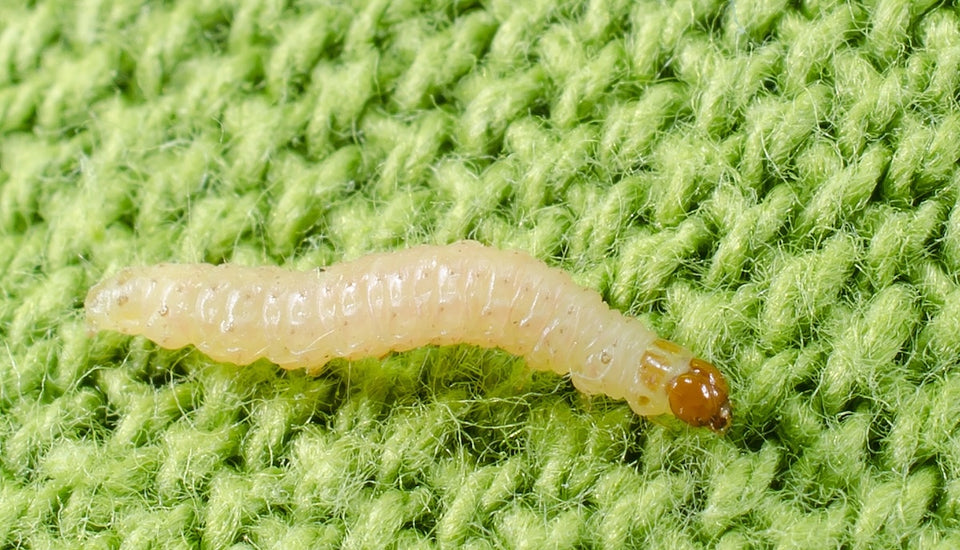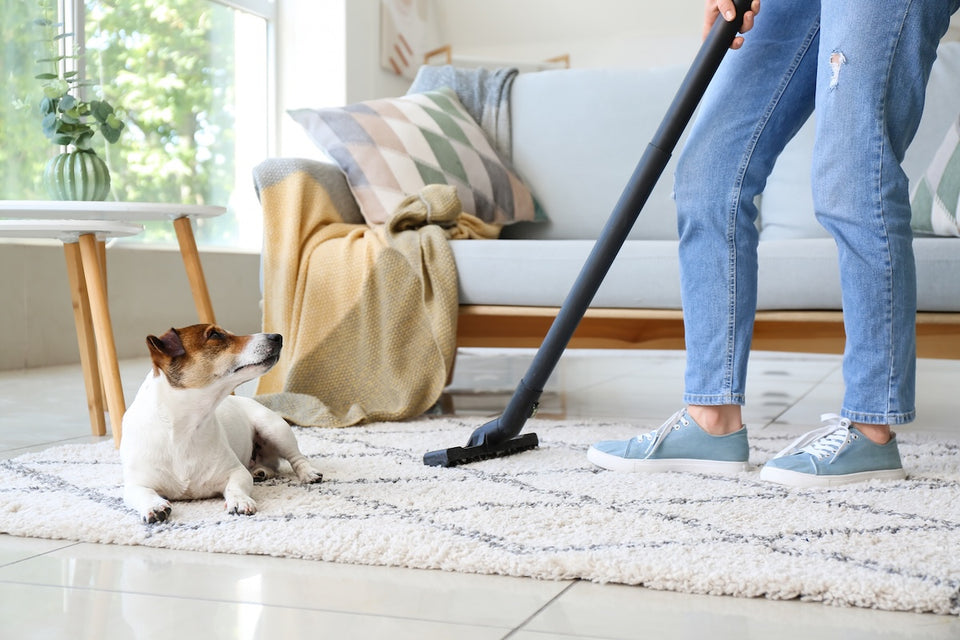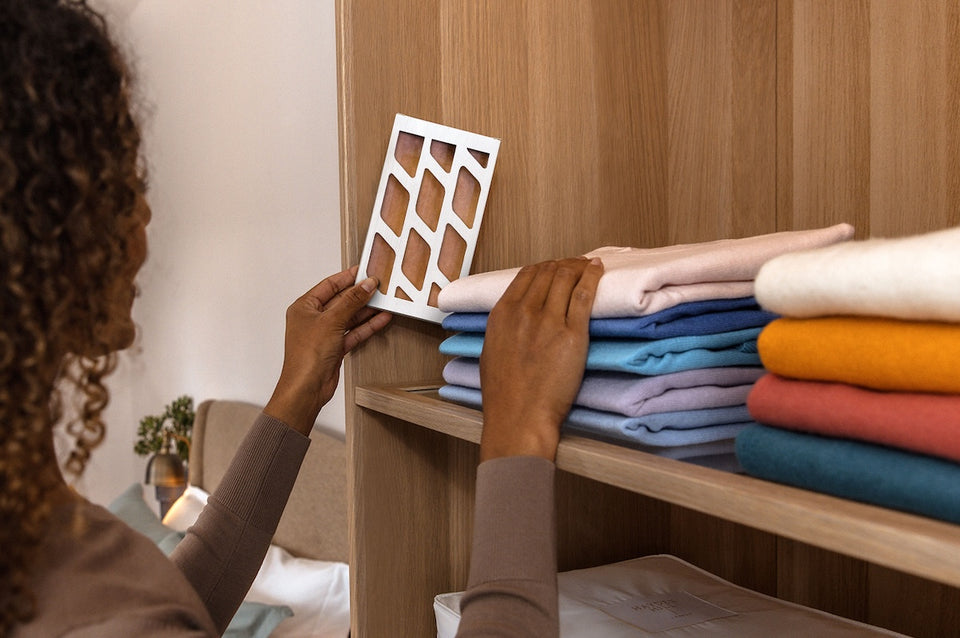What Materials are Most Attractive to Clothes Moths and Carpet Moths

When it comes to household pests, few are as quietly destructive as Clothes Moths and Carpet Moths. Unlike other insects that make their presence obvious, these moths often go unnoticed until damage has already been done. Holes in wool jumpers, frayed rugs, or threadbare patches in carpets are all signs that moth larvae have been feeding - and they rarely stop at just one item.
Understanding what attracts Clothes Moths and Carpet Moths to certain materials is the first step toward preventing damage and keeping your wardrobe and home furnishings safe.
The Real Culprit: Moth Larvae, Not the Moths Themselves
While adult moths are the ones you occasionally see fluttering near your wardrobe or skirting boards, it’s their larvae that cause the damage. Adult moths don’t eat clothing or fibres at all, their sole purpose is to reproduce. Once they lay eggs on suitable materials, the hatching larvae begin feeding on natural fibres to grow and develop.
This feeding stage can last several weeks or even months, depending on temperature and food availability. During this time, the larvae consume the protein found in animal fibres, leaving behind the characteristic holes and frayed patches that frustrate so many homeowners.

Clothes Moths and Carpet Moths rarely feed on synthetic fabrics like polyester, nylon, or acrylic unless those items are blended with natural fibres or contain food or sweat residues that attract them.
The Role of Dirt, Sweat, and Food Traces
Cleanliness plays a major role in whether moths target your belongings. Moth larvae are more likely to feed on fabrics that carry traces of:
- Perspiration
- Skin oils
- Food crumbs
- Hair or pet dander
These organic residues make fabrics far more appetising to moth larvae. For example, a wool jumper worn a few times and put away without washing is much more likely to be attacked than one that has been freshly cleaned.

Even spotless homes can have hidden risks especially if garments or textiles are stored for long periods without being disturbed. Moths prefer dark, quiet environments where they can feed undisturbed, such as the back of a wardrobe, under furniture, or inside storage boxes.
Where Carpet Moths Cause Damage
While Clothes Moths focus on garments, Carpet Moths tend to target home furnishings. They feed on natural fibres in rugs, carpets, curtains, and upholstered furniture.
Common hotspots include:
- Areas of carpet beneath heavy furniture (where cleaning is infrequent)
- Along skirting boards
- Under rugs or mats
- In wool or natural-fibre doormats
Because these areas are low-traffic and rarely vacuumed, larvae can feed undisturbed for weeks before anyone notices. Carpet Moth damage often appears as uneven thinning or bare patches where the pile has been eaten away.
How to Prevent Clothes Moth and Carpet Moth Damage

The good news is that with a few consistent habits, you can make your home far less inviting to moths.
1. Clean Thoroughly and Regularly
Frequent cleaning removes eggs, larvae, and the dust or hair that they feed on.
- Vacuum carpets, rugs, and skirting boards often, especially in hidden corners and under furniture.
- Wash or dry-clean wool, cashmere, and silk garments before storing them away.
- Empty vacuum bags or dust containers immediately after cleaning to prevent re-infestation.
2. Store Clothes Correctly
When storing out-of-season garments, ensure they are clean, dry, and sealed properly.
- Use breathable cotton garment bags instead of plastic covers, which can trap moisture.
- For smaller items, opt for organic cotton storage bags with secure zippers and clear panels so you can see what’s inside without opening.
- Avoid overfilling storage containers - moths are drawn to compact, undisturbed areas.
3. Monitor with Moth Traps
Pheromone traps are one of the most effective, chemical-free ways to detect and control moth activity.
- Clothes Moth Traps attract and capture adult males, breaking the breeding cycle before new larvae hatch.
- Carpet Moth Traps serve the same purpose in living spaces, helping you spot early signs of activity. Replace traps every 12 weeks or when they are full to maintain effectiveness.

4. Rotate and Air Out Your Wardrobe
Moths dislike disturbance. Periodically moving or shaking garments, brushing woollens, and letting air circulate through wardrobes can disrupt eggs and larvae before they cause damage.
5. Inspect and Treat Affected Areas Promptly
If you spot signs of damage, remove affected items and check nearby fabrics or rugs immediately. Clean the area thoroughly, dispose of infested materials, and use fresh traps to monitor for ongoing activity.
Natural Deterrents and Misconceptions
Many people turn to natural deterrents like cedarwood, lavender, or bay leaves to keep moths away. While these can help mask scents that attract moths, they don’t eliminate existing larvae or eggs. Natural repellents work best as part of a wider prevention plan - combined with good hygiene and regular monitoring using pheromone traps. However placing other deterrents nearby can distract from the traps so make sure they are not all too near each other.
It’s also worth noting that Clothes Moths and Carpet Moths are not drawn to light, despite their name. They prefer darkness and stillness, which is why wardrobes, drawers, and quiet carpeted corners are prime real estate for them.
The Key to Long-Term Protection
Clothes Moth and Carpet Moth infestations are most effectively prevented through awareness and consistency. Regular cleaning, sealed storage, and early detection are the three pillars of successful moth control.
By understanding what these pests feed on, and why they’re drawn to natural fibres, you can take simple, practical steps to protect your favourite garments, treasured textiles, and home furnishings from harm.

For ongoing peace of mind, consider using Moth Prevention Clothes Moth Traps and Carpet Moth Traps year-round. They provide early warnings, monitor activity, and help ensure that your home stays moth-free in every season.
About MothPrevention
MothPrevention® speak to customers every day about their clothes moth issues - clothes moths are a species that are ever increasing and that can cause significant damage to clothes, carpets and other home textiles.
To date, we’ve helped over 250,000 customers deal with their moth problems. We have developed professional grade solutions including proprietary pheromones and trap design engineered to the highest production standards.





